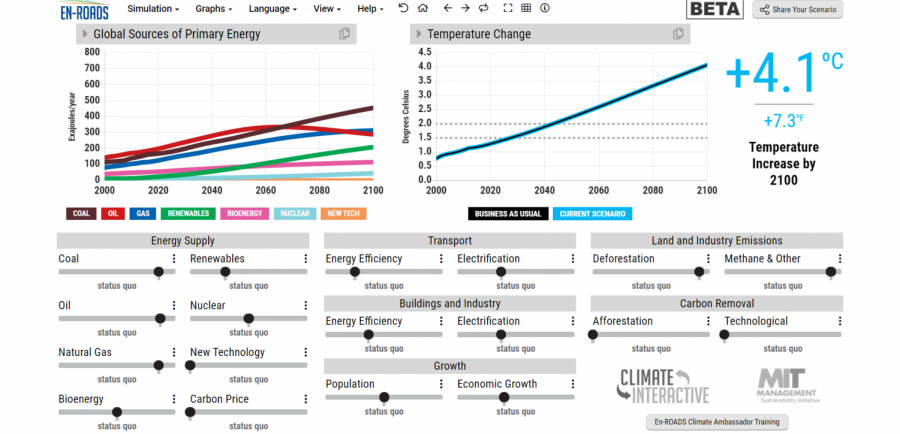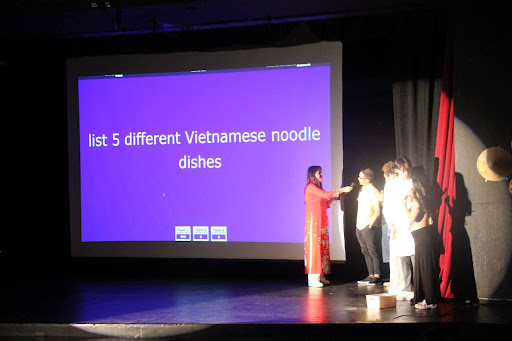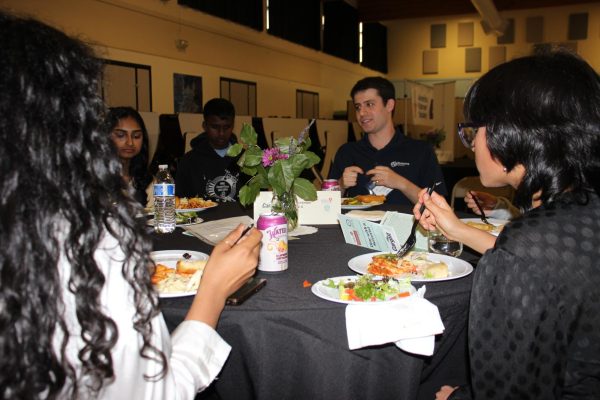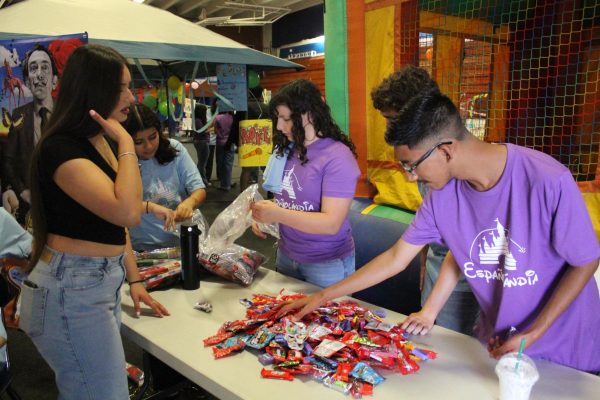IHS Girls in STEM Controls Climate Change Simulation
During lunch on Oct. 8, IHS Girls in STEM hosted an event to bring attention and interest to an ongoing issue – climate change. Amid the recent fires and Fremont’s new changes to its Climate Action Plan, the club decided having an interactive event on climate change would be the most beneficial now more than ever.
The event started out with a presentation by Lohita Vadlamudi (11), the club’s secretary, going over the current scale and impact of climate change. Afterwards, the twenty participants split into breakout rooms along with an officer. Members then interacted with an online simulation to brainstorm possible ways in mitigating the impact of climate change. Specifically, members analyzed ideas to limit the average global temperature to two degrees Celsius by the year 2100. The simulation included various factors, from population levels to energy efficiency, which club members toggled with to see their effects on present climate change trends.
“I researched a little bit and found that simulations are the best way to show the members how different climate solutions could impact different things such as emissions and global temperature,” explained Vadlamudi. “I wanted the members to take from this simulation that even the smallest of things implemented worldwide could make a huge difference and that there is hope for our generation to fix the mistakes past ones have made.”
At the end of the event, members rejoined the main session and discussed actions companies and programs are taking to alleviate climate change. Both the lecture and simulation especially helped participants understand more about the issue’s gravity.
“I learned that small factors like increasing the carbon price and energy efficiency can make a big difference in the overall [global] temperature,” said Christine Arakkal (10), a member attending the simulation. “I enjoyed the interactive aspect of the simulation. The breakout rooms were a great way to share ideas about what could be done to help prevent climate change.”
While extremely fun, the simulation was also somewhat challenging. Interacting with the simulation often showed that diminishing climate change’s consequences is not a simple issue. Rather, it requires a wide range of people and industries making consistent efforts to reduce their carbon footprint.
“Although we attempted to only decrease or increase factors to a reasonable amount to maintain a more realistic perspective, it was extremely difficult to reach our goal of a two degrees [Celsius] increase only,” described Prachi Sinha (11), another participant in the simulation. “This just emphasizes how real and pressing this problem truly is.”
Ultimately, the simulation successfully brought more light to the prevalence of climate change today. However, there are a few aspects Girls in STEM wishes to improve on over the next few events they host.
“I was not able to gauge how the members were feeling or ask any direct questions unless we were in breakout rooms since a lot of people are reluctant to talk in front of the whole group, especially being on Zoom,” observed Vadlamudi. “I believe next time, I would ask for the members to turn their videos on and just bring in more people to our meetings through direct messaging and networking.”
In future events, Girls in STEM hopes to have various webinars and interactive activities to engage participants in ongoing global issues.








